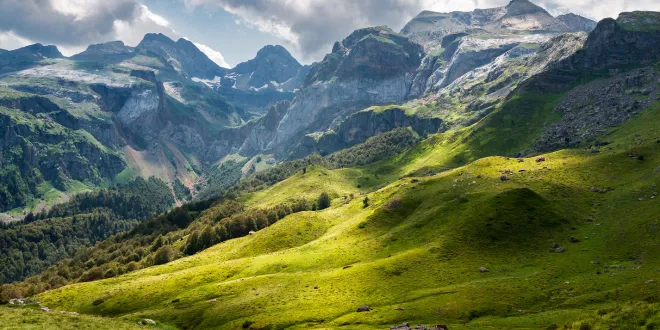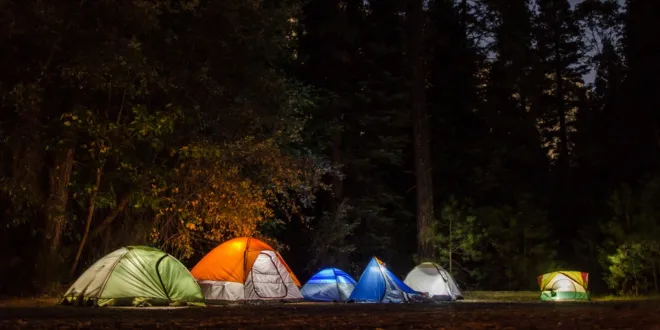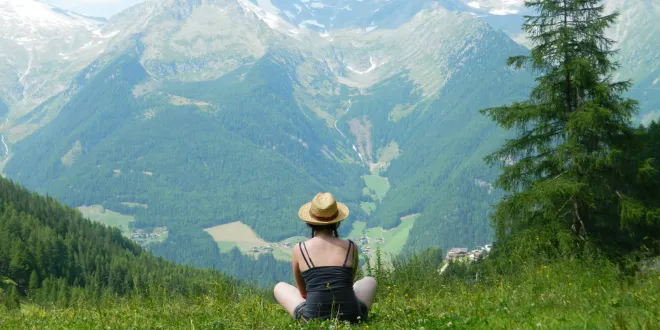Wild camping in the French Alps offers an unforgettable escape into some of Europe’s most breathtaking mountain landscapes. Far from crowded trails and busy resorts, wild camping lets you experience nature in its purest form under star-filled skies and beside glacial streams. But before you pitch your tent, it’s essential to understand the wild camping rules in France, as regulations vary across national parks and rural areas.
This guide covers everything you need to know, from the best spots for overnight stays to the best time for Wild Camping in the French Alps, ensuring your adventure is both legal and sustainable. We’ll also walk you through a complete gear checklist to keep you safe and comfortable in alpine conditions. Whether you’re a seasoned backpacker or a first-time camper, discovering the magic of wild camping in the French Alps starts with smart planning and deep respect for the mountains.

Wild Camping in the French Alps
Wild camping in the French Alps offers an unparalleled connection with nature, where towering peaks, alpine meadows, and crystal-clear lakes create a breathtaking backdrop. Unlike designated campsites, wild camping allows adventurers to experience solitude and true wilderness. However, it’s essential to follow local regulations—while wild camping is tolerated in some remote areas of the Alps, it’s technically restricted in national parks like Parc National de la Vanoise.
Always practice Leave No Trace principles, camp far from villages, and avoid protected zones. With proper preparation, wild camping here becomes a soul-stirring journey through one of Europe’s most majestic landscapes.
Is wild camping legal in the French Alps?
Wild camping in the French Alps exists in a legal gray zone. While France doesn’t officially allow wild camping, short-term bivouac is often tolerated if done responsibly and discreetly. However, strict wild camping rules apply in protected areas like national parks, where overnight stays are prohibited.
Outside these zones, you can usually camp for one night away from homes and trails. Always check local regulations, as rules vary by region. Understanding the legality ensures your wild camping adventure remains respectful to nature and local communities. When done right, experiencing the Alps this way is unforgettable.
Understanding the Legal Status of Wild Camping in France’s Mountain Regions
Wild camping in the French Alps exists in a legal gray area. While France generally restricts wild camping, short-term stays outside protected zones are often tolerated if done responsibly. However, strict wild camping rules apply in national parks like Vanoise and Écrins, where overnight stays are prohibited without permission.
In other rural areas, you may camp for one night if you stay discreet, avoid private property, and leave no trace. Always research local laws before heading out. Understanding the legal status ensures your wild camping adventure remains respectful, safe, and sustainable in this stunning alpine environment.

Where can you wild camp in the French Alps?
Finding where you can wild camp in the French Alps requires research and respect for local laws. In unrestricted rural areas, wild camping is often allowed for one night if you stay far from buildings, roads, and protected sites. Regions like Queyras, Oisans, and Haute-Maurienne are known for being more permissive.
Always choose the best spots that minimize environmental impact — avoid meadows near water sources or popular trails. National parks generally ban camping, but some allow bivouac under strict rules. Following wild camping rules ensures sustainability. With careful planning, you can enjoy peaceful nights under the stars while preserving the beauty of wild camping in the French Alps
Permitted Areas and Hidden Valleys for Responsible Overnight Stays
Finding where you can wild camp in the French Alps requires careful planning. While national parks ban overnight stays, many rural and forested areas allow wild camping for one night if done responsibly. Look for forest roads, high pastures, or quiet valleys away from villages and protected zones.
Regions like Queyras, Haute-Maurienne, and Oisans offer more flexibility. Always choose best spots that minimize environmental impact — avoid lakesides and trails. Follow wild camping rules: no fires, no waste, and pack out all trash. With respect for nature and local laws, you can enjoy unforgettable nights under the stars in some of Europe’s most majestic mountains.
Best spots for wild camping in the French Alps
Looking for the best spots for wild camping in the French Alps? Consider the Queyras Regional Nature Park — scenic, quiet, and camper-friendly. The Oisans valley offers stunning views and good access to trails. Haute-Maurienne provides remote valleys perfect for solitude.
Near Chamonix, stick to high-altitude bivouacs outside park cores. Écrins and Vanoise have limited legal options, but permitted bivouac zones exist. Always follow wild camping rules and avoid sensitive areas. These best spots combine natural beauty with relative freedom. Pair your trip with the best time for wild camping — summer months — and use a solid gear checklist to stay safe and comfortable in the mountains.
Top 7 Scenic and Accessible Locations for an Unforgettable Alpine Experience
Looking for the best spots for wild camping in the French Alps? Start with the Queyras Regional Park — peaceful, scenic, and camper-friendly. The Vanoise Massif offers high-altitude beauty, though camping is restricted in core zones. Écrins National Park allows limited bivouac with permits.
Oisans, near Les Deux Alpes, has hidden valleys perfect for tents. Don’t miss Haute-Maurienne or the Ubaye Valley for solitude. Always follow wild camping rules and choose locations away from trails. These spots combine accessibility with breathtaking views, making them ideal for experiencing true wild camping. Plan wisely and respect nature for a magical alpine adventure.

Wild camping rules France mountain areas
In France’s mountain areas, wild camping rules prioritize environmental protection. While bivouacking is unofficially accepted in some places, it must be low-impact and short-term. You cannot camp within national parks like Vanoise or Écrins without permission. Stay away from private property, villages, and protected zones.
Avoid fires, leave no trace, and pack out all waste. These wild camping rules help preserve fragile alpine ecosystems. Always be discreet and depart by morning. Following these guidelines ensures future adventurers enjoy the same pristine nature. For a successful wild camping trip in the French Alps, knowing and respecting the rules is just as important as your gear checklist.
Key Regulations You Must Follow in National Parks and Rural Zones
In France’s mountain areas, wild camping rules vary by region but generally emphasize minimal impact. Bivouacking (short overnight stays) is tolerated in many places, but only for one night and far from homes, roads, and protected sites. National parks like Vanoise and Écrins strictly prohibit wild camping without authorization.
You must avoid lighting fires, damaging vegetation, or polluting water sources. Always follow the “Leave No Trace” principle. These rules protect the fragile alpine ecosystem. Respecting them ensures future adventurers can enjoy the same pristine landscapes. Before your trip, check local regulations to stay compliant and enjoy wild camping responsibly in the French Alps.
How to wild camp safely in the French Alps
To wild camp safely in the French Alps, preparation is key. Weather changes fast — even in summer, expect cold nights and sudden storms. Choose best spots on high, dry ground, away from rivers or avalanche paths. Be cautious around alpine wildlife and grazing cows, which can be aggressive. Altitude above 2,500 meters requires acclimatization to avoid sickness.
Always carry a map, compass, and emergency supplies. Your gear checklist should include a 4-season tent, warm sleeping bag, and waterproof layers. Let someone know your route. Following wild camping rules also enhances safety by keeping you away from restricted or risky zones. With smart planning, wild camping becomes a safe and magical experience.
Staying Safe from Wildlife, Weather, and Altitude Challenges
Wild camping in the French Alps is thrilling but demands preparation. Weather can change rapidly — even in summer, expect cold nights and sudden storms. Altitude sickness is a real risk above 2,500 meters, so acclimatize gradually. While wildlife like marmots and ibex are harmless, be aware of grazing cows in alpine pastures — they can be protective.
Always carry a whistle and keep distance. Check avalanche risk in spring. Choose safe best spots on stable ground, away from rivers and cliffs. With proper planning and awareness, you can enjoy a safe and rewarding experience in one of Europe’s most beautiful mountain ranges.
Best time for wild camping in the French Alps
The best time for wild camping in the French Alps is from late June to early September, when snow has melted at lower elevations, mountain huts are open, and trails are accessible. July and August offer the most stable weather, blooming flora, and milder nighttime temperatures—ideal for sleeping under the stars. Early September is quieter, with fewer hikers and crisp, clear skies.
Avoid spring due to lingering snow and high avalanche risk, and steer clear of October onwards when temperatures drop rapidly. This window ensures safer conditions, longer daylight, and a higher chance of stunning sunrises over alpine ridges—perfect for unforgettable wild camping experiences.
Ideal Seasons and Weather Windows for a Comfortable Mountain Stay
The best time for wild camping in the French Alps is between June and September, when snow has melted, trails are clear, and temperatures are mild. July and August offer the most stable weather and long daylight hours — ideal for hiking and setting up camp.
Early June or late September can work at lower elevations, but nights are colder and storms more likely. Avoid winter months due to extreme cold and avalanche risks. This period also aligns with the best conditions for using your full gear checklist effectively. Plan your trip during this window for a safer, more enjoyable wild camping experience in breathtaking alpine scenery.

Wild camping gear checklist for the Alps
A solid wild camping gear checklist for the Alps includes a lightweight 4-season tent, a sleeping bag rated to at least -5°C, and a high-insulation sleeping pad for cold mountain ground. Pack moisture-wicking layers, a waterproof jacket, and warm down insulation. Don’t forget a portable stove, food supplies, water filter, headlamp, and a detailed map with compass or GPS.
A compact first-aid kit, emergency blanket, and multi-tool are crucial for safety. Choose a durable backpack (60–70L) and trekking poles for steep terrain. Always prepare for sudden weather changes—this gear ensures comfort and safety during wild camping in the French Alps.
Essential Equipment for Cold Nights, Rough Terrain, and Remote Locations
A solid gear checklist is crucial for wild camping in the French Alps. Start with a lightweight, 4-season tent and a sleeping bag rated for 0°C or lower. A sleeping pad with high insulation (R-value >4) prevents heat loss on cold ground. Pack moisture-wicking layers, a waterproof jacket, and warm insulation like down.
Don’t forget a headlamp, stove, food, and water filter. Navigation tools (map, compass, GPS) are vital. Include a first-aid kit and emergency blanket. This gear checklist ensures you’re ready for alpine weather, rough terrain, and remote best spots — keeping your wild camping trip safe and comfortable.
Conclution
Wild camping in the French Alps is a thrilling way to experience nature, offering solitude, stunning landscapes, and a deep connection with the outdoors. While not officially legal, short-term bivouacking is often tolerated if done responsibly—away from protected areas, villages, and trails. The best spots include Queyras, Oisans, and Haute-Maurienne, where campers can enjoy breathtaking views while following wild camping rules (no fires, leave no trace).
The best time for wild camping is June to September, when temperatures are milder and trails are snow-free. A well-prepared gear checklist (4-season tent, warm sleeping bag, waterproof layers) is essential for safety in unpredictable alpine conditions. By respecting nature and local regulations, adventurers can enjoy a sustainable and unforgettable wild camping experience in the French Alps.
Frequently asked questions
1.Is wild camping legal in the French Alps?
Wild camping is restricted but bivouacking (one-night stays) is often tolerated outside national parks. Avoid private land and protected zones. Always check local rules.
2.Where are the best wild camping spots in the French Alps?
Queyras, Oisans, and Haute-Maurienne offer scenic, permissive areas. Avoid national park cores and stick to remote valleys.
3.What are the key wild camping rules in France?
Camp discreetly, leave no trace, no fires, and pack out all waste. Stay far from villages and trails.
4.When is the best time for wild camping?
June to September—stable weather, snow-free trails, and warmer nights. Avoid winter due to extreme cold.
5.What gear is essential for wild camping?
4-season tent, 0°C sleeping bag, insulated pad, waterproof layers, map, and emergency supplies.
6.Can I camp in French national parks?
Most national parks ban camping but allow bivouac in designated zones. Check park-specific rules.
7.How to stay safe while wild camping?
Avoid avalanche zones, check weather forecasts, and camp on stable ground. Carry a whistle and first-aid kit.
8.Are campfires allowed?
No. Wildfires are a major risk. Use a portable stove instead.
9.What wildlife should I be aware of?
Marmots and ibex are harmless, but grazing cows can be aggressive. Store food securely.
10.How to minimize environmental impact?
Follow Leave No Trace principles: pack out trash, avoid trampling vegetation, and camp 50m from water sources.
